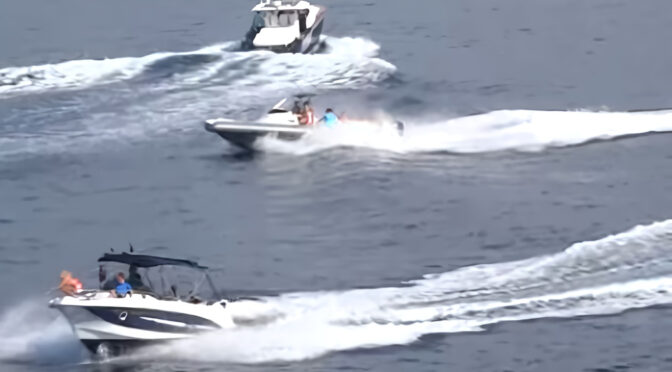Views: 1052
This summer has been one of the most impacted by nautical overcrowding. Various accidents in the Balearic Islands, caused by the high density of boats and the behavior of some vessels, have increased the sense of vulnerability among those who want to safely enjoy the marine environment.
Most users of the coast don’t rely on motorized vessels. They are swimmers, snorkelers, surfers, or kayakers, and they feel threatened by an overwhelmed coastline.
GOB has submitted objections to the “Preliminary Draft Law for the Integral Management and Regulation of the Balearic Islands’ Coastline.” This legislative proposal by the Balearic Government raises several questions that need to be addressed.
Boat Speed and Monitoring
GOB has suggested regulating the circulation of motorboats based on three distances from the coast:
- In the first 50 meters, prohibit free anchoring of boats, except in cases of force majeure, to protect the most vulnerable users.
- Within the first 300 meters, limit the speed of any vessel to 5 knots.
- Within one mile of the coast, limit the speed to 10 knots.
GOB has also requested that the law includes an annual budget allocation to cover the costs of monitoring, controlling, and supervising activities in the area, including staffing and necessary resources.
Parking capacity
Designing parking areas according to the capacity of beaches is essential to avoiding the degradation of these spaces. The law differentiates between urban, semi-urban, and natural beaches based on square meters per user.
In this regard, GOB suggests considering beaches (especially some pristine ones) that not only receive visitors by car but also by public transport or passenger boats. In these cases, it is proposed to reduce the size of parking areas.
Expanding parking lots, as it was done this year at Cala Mitjana, is seen as a major mistake. This beach was already overcrowded, and expanding the parking area degrades the environment and undermines Menorca’s tourism offering.
Moorings, dry marinas, and boat ramps
The General Port Plan of the Balearic Islands conducted a study on the nautical carrying capacity of each island. Data collected from previous aerial surveys reveals that Menorca has exceeded its carrying capacity for some time.
For this reason, GOB has requested that this reality be reflected in the law and that it should also be taken into account when discussing the creation of new dry marinas or more boat ramps, which facilitate putting more boats on an already saturated coastline.
Mediterranean tapeweed and sand movements on beaches
Menorca’s beaches have receded by an average of 5 meters since 1956, according to a scientific study by the University of the Balearic Islands. When examining the details, it becomes clear that urban beaches have retreated significantly more than natural ones. Management practices and the conservation of the adjacent dune systems appear to be key factors in preventing beach erosion.
For these reasons, GOB has requested that the removal of Posidonia no longer be considered a priority activity and that any sand movement on beaches should first require approval from the Climate Change Department.

